Description
Wheel Chair Control Based on Eye Ball Cursor using Raspberry Pi and OpenCV
ABSTRACT – Smart Wheel Chair Based on Eye Ball Cursor
Smart Wheel Chair? In this study, a specific human-computer interaction system using eyeball movement is presented. Conventionally, a computer system uses a mouse as one of the data input devices. But in this system, we use eyes instead of the mouse which provides a unique way of operating the computer with the help of eyeball movements. The implementation work underlying this system for pupil identification uses the raspberry pi board to control the cursor of the personal computer and the Eye Aspect Ratio technique is ascertained along with OpenCV to detect the pupil. This system tracks the eye movements of the user with an IP cam (Internet Protocol camera) and simulates the eye movements into mouse cursor movements on screen and also detects the user’s eye staring at an icon and will translate it into click operation on-screen. The main aim of this system is to help the user to control the cursor without the use of hands and is of great use, especially for people with disability. Wheel Chair Control Based on Eye Ball Cursor using Raspberry Pi and OpenCV
Wheel Chair Control Based on Eye Ball Cursor using Raspberry Pi and OpenCV
INTRODUCTION:
Some people are not able to operate computers because of an illness. The idea of eye controls is of great use to not only the future of natural input but more importantly the handicapped and disabled. Moreover, implementing a controlling system in it enables them to operate a computer without the help of another person. It is more helpful to handicapped people. Those are needed to operate a wheelchair without a hand this one is most useful. Those can operate by the movement of the eye. In this paper, the camera is capturing the image of eye movement. First, detect the pupil center position of the eye. Then the different variation in pupil position gets different movements of the chair.? The Implementation process for Pupil detection using Raspberry pi and on the terminal of Raspbian image installed on raspberry pi. Wheel Chair Control Based on Eye Ball Cursor using Raspberry Pi and OpenCV
Wheel Chair Control Based on Eye Ball Cursor using Raspberry Pi and OpenCV
EXISTING SYSTEM:
In the existing system, they are giving remote control type of wheelchair controlling system is present in a wheelchair. ? But this system is not much helpful for all paralyzed people because handicapped peopled are unable to move their hands freely. So, we go for the Brain-computer interface based on the eye blink it moves in that direction accordingly. It also has some limitations. The person must be always wearing a brain wave sensor, also sensor is powered by a battery this needs to be changed periodically. If battery power goes down the sensor will not work properly and might give error values. Wheel Chair Control Based on Eye Ball Cursor using Raspberry Pi and OpenCV
Wheel Chair Control Based on Eye Ball Cursor using Raspberry Pi and OpenCV
PROPOSED SYSTEM:
In order to overcome the limitation in the existing system, we go for the alternative method Eyeball based wheelchair control. In this method, the camera is focused on the eye by using OpenCV we need to find out the centroid of the eyeball. By tacking the eyeball movement, we can move the wheelchair accordingly. It is very useful for the Elderly and disabled people who need guidance to live. Smart Wheel Chair Based on Eye Ball Cursor
Wheel Chair Control Based on Eye Ball Cursor using Raspberry Pi and OpenCV
BLOCK DIAGRAM:

BLOCK DIAGRAM EXPLANATION:
Raspberry pi is used with ARMv8 (BCM2837) processor pace with 1 GB of RAM and in-built Wi-Fi. An Internet Protocol camera (IP Camera) is associated with the Raspberry pi keeping in mind the end goal to supply PC vision to the machine. The IP camera will grab the eye movement and subsequently control the cursor. Likewise, it will also perform the activities like double click, scrolling, and selection. This system involves mainly the following steps. They are 1. IP cam captures the eyeball movements which are processed using OpenCV 2. Eye Aspect ratio (EAR) technique for pupil detection 3. Frames getting started and EAR values being detected based on the eyeball movements. 4. Controlling the cursor to perform various operations such as scroll, select and double click. Smart Wheel Chair Based on Eye Ball Cursor
Flow diagram:
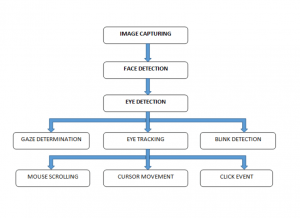
HARDWARE:
- Raspberry pi
- SD card?
- Camera?
SOFTWARE:
- Raspberry pi OS: Raspbian stretch
- Programming Platform: python 3 IDLE
- Programing language: python 3
- Library: OpenCV
ADVANTAGES:
- High accuracy
- Handicap people can operate computers
Feature scope:
- In the future, we can also add new functions which can be operable in useful circumstances to control the cursor by the user and implement this system on platforms like mobile phones, tablets,s, etc.
- In the future, we can also develop a series of operational units so that we can attain a fully operating experience for the handlers from turning on to turning off the computer system
Wheel Chair Control Based on Eye Ball Cursor using Raspberry Pi and OpenCV
CONCLUSION:
An eyeball movement-based cursor control using raspberry pi and OpenCV system is developed. The above experimental results show that we can control the functions of the cursor efficiently without the use of the mouse. The operations performed using this system are easy in terms of controlling the cursor [2]. This system is a possible solution to all the problems that are faced due to the existing manual of controlling the cursor with the help of the mouse which is not possible in the case of people with disability. This system offers users new means to control the computer system. The work can be extended to improve the efficiency of the system in terms of covering all the mouse functions using eyeball movements. Presently, this system can be useful for the overall operational behavior by interacting with the computer system without the use of the mouse. Through Eyeball movement-based cursor control system, it can be concluded that there can be considerable development in the field of human-computer interface with the use of IoT.
REFERENCES:
- Neil Castellino and Michelle Alva, ?An image-based eye-controlled assistive system for paralytic patients?, IEEE Conference Publications, 2017.
- Shu-Fan Lin, Xuebai Zhang, Shyan-Ming Yuan, “Eye Tracking Based Control System for Natural Human-Computer Interaction”, Computational Intelligence and Neuroscience, 2017.?
- each and Soukupov??Real-Time Eye Blink Detection using Facial Landmarks?, Center for Machine Perception, February 2016.?
- Suree Pumrin and Chairat kraichan, ?Face and eye-tracking for controlling computer functions?, IEEE Conference Publications, 2014.?
- A. Geetha and M. Mangaiyarkarasi, ?Cursor Control System Using Facial Expressions for Human-Computer Interaction?, Vol 8 Issue 1 APRIL 2014, ISSN: 0976-1353 International Journal of Emerging Technology in Computer Science & Electronics, pp 30-34.?
- Florina Ungureanu, Robert Gabriel Lupu and Valentin Siriteanu, ?Eye-tracking mouse for human-computer interaction?, IEEE Conference Publications, 2013.?
- Bacivarov, Ionita M., Corcoran,P. ,?Statistical models of appearance for eye tracking and eye-blink detection and measurement?, Vol.54, No.3, IEEE Transactions on consumer electronics, August 2010.

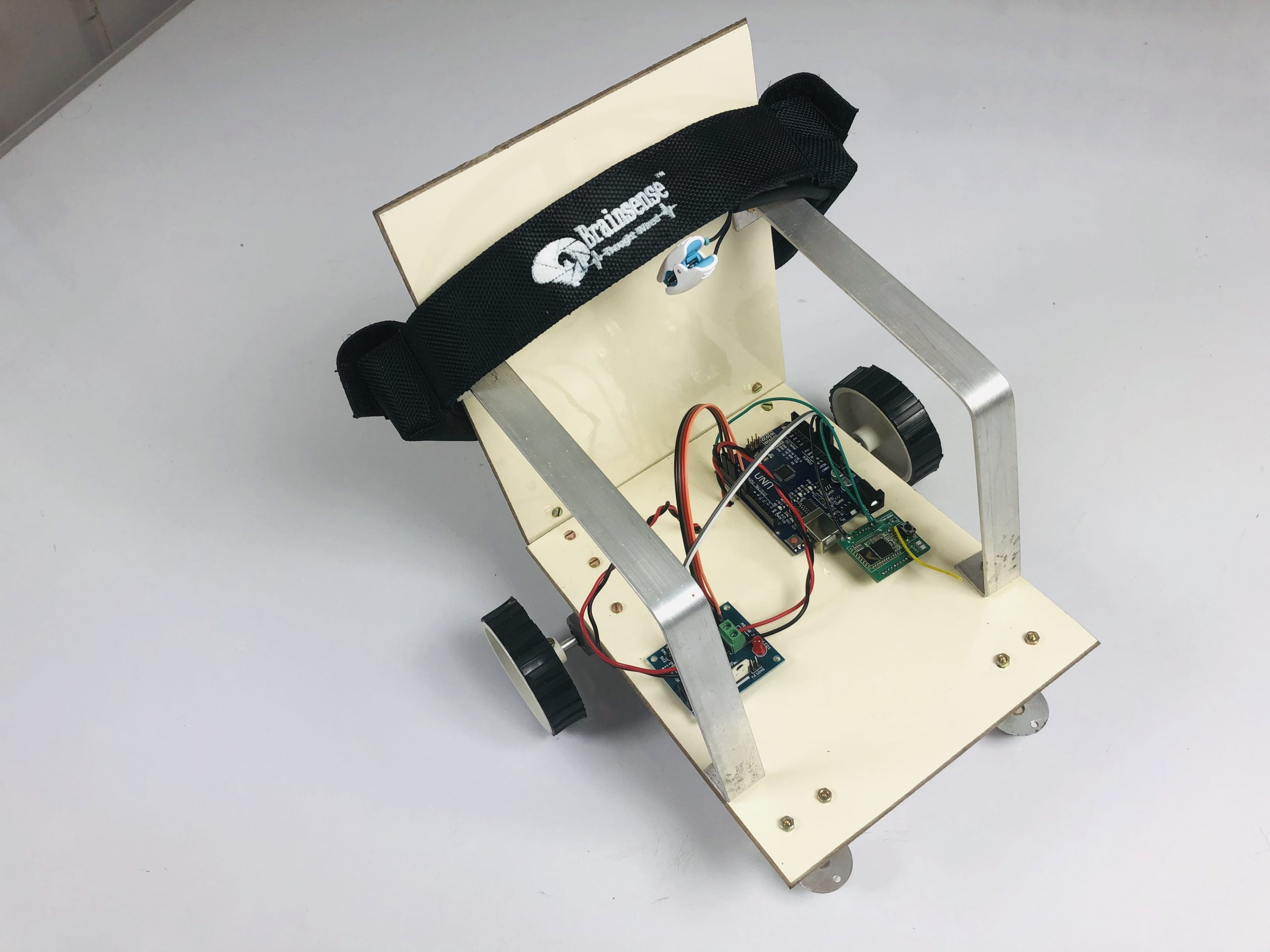

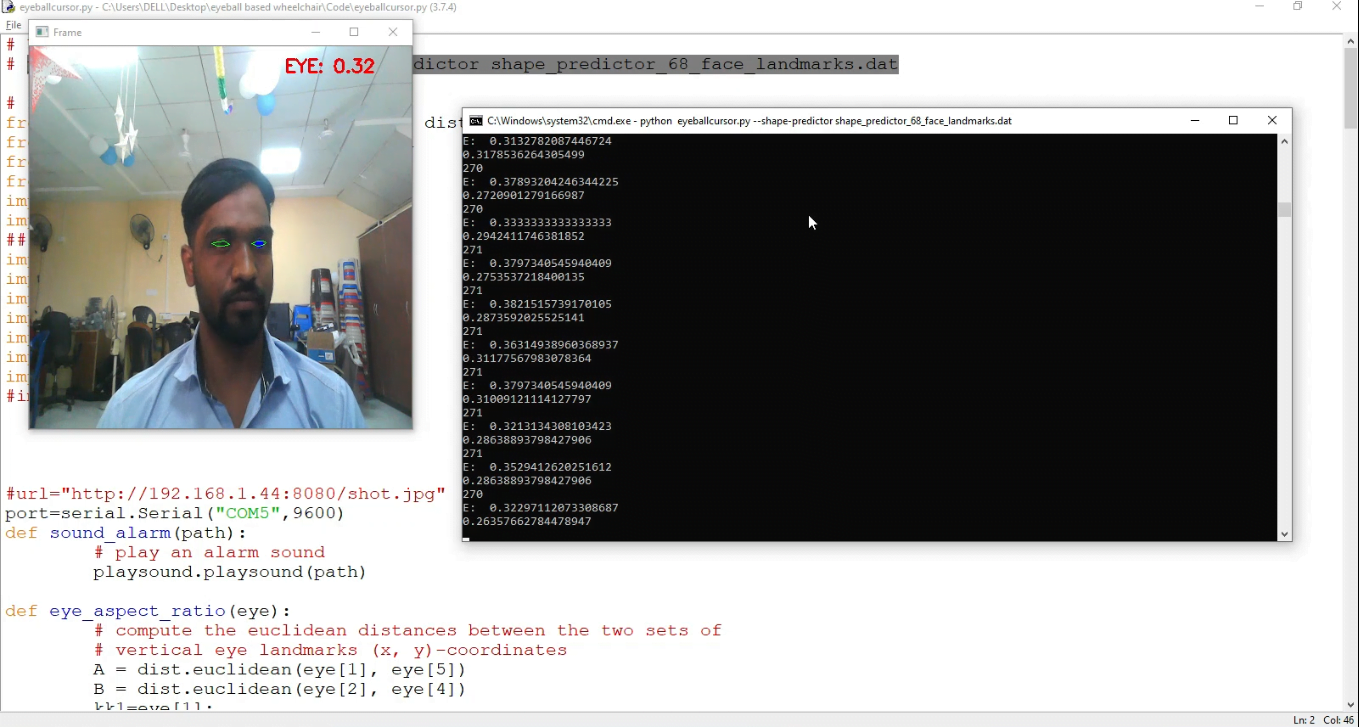
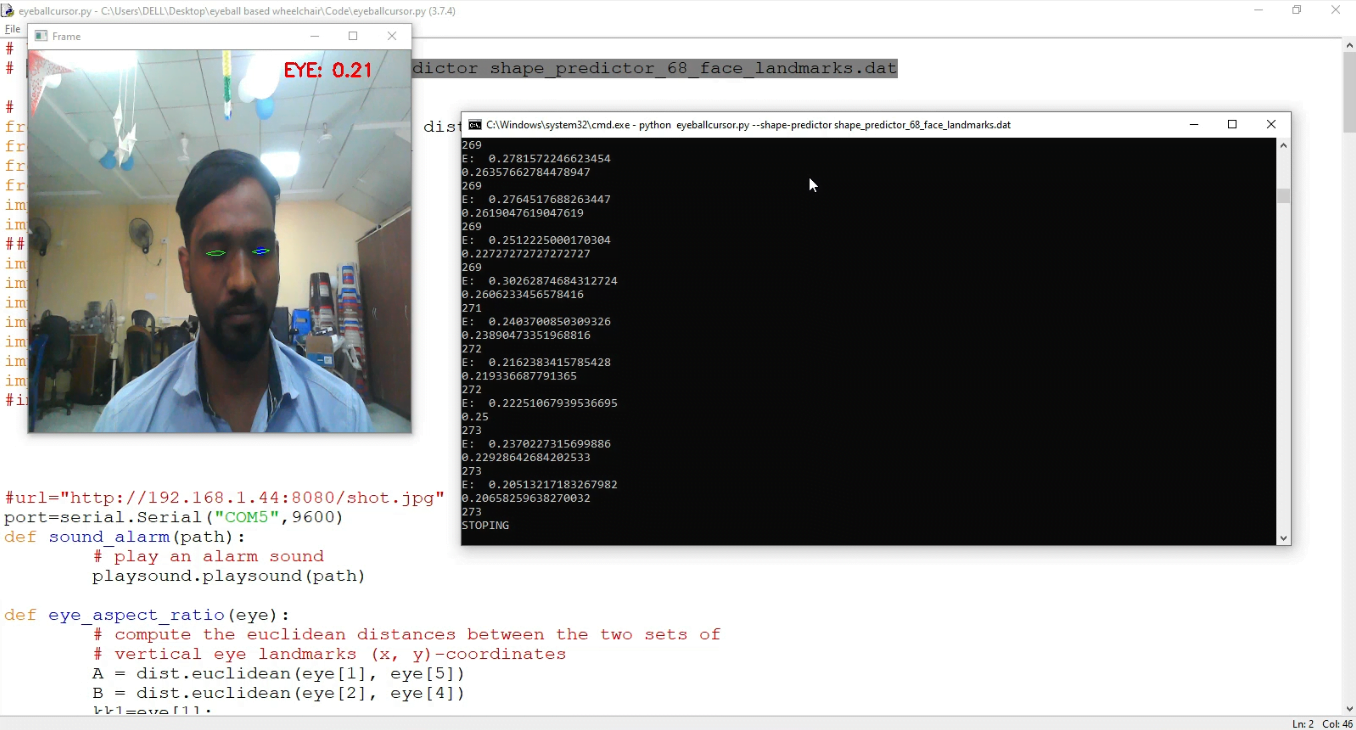
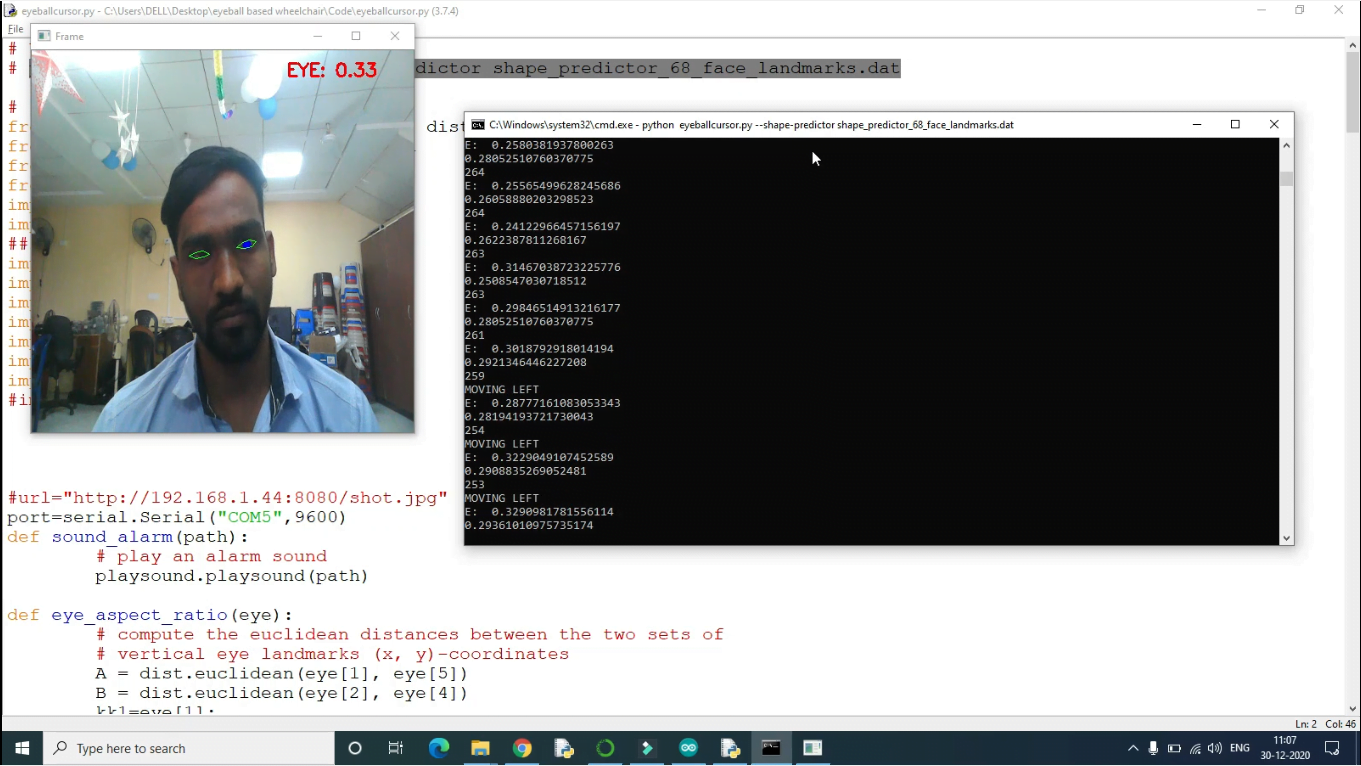




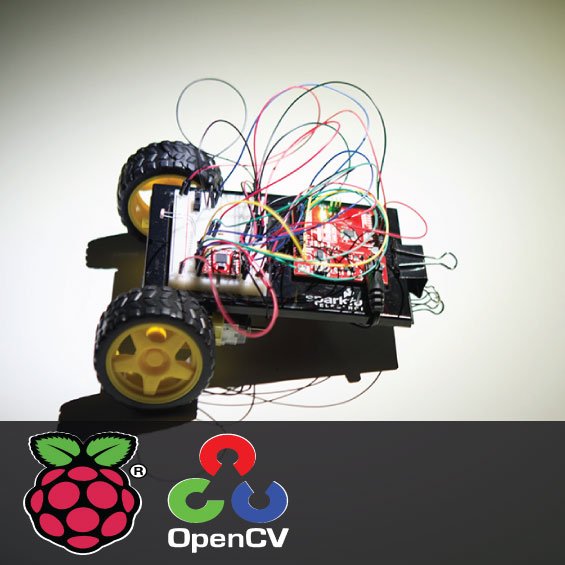





























































































































































































































































































































































































































































































































































































































































































































































































































































































































































































































































Customer Reviews
There are no reviews yet.